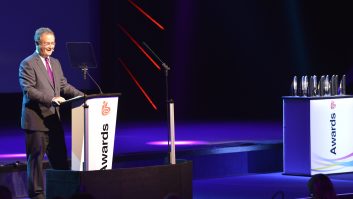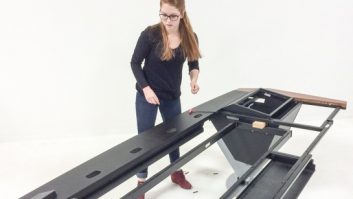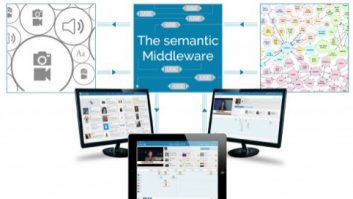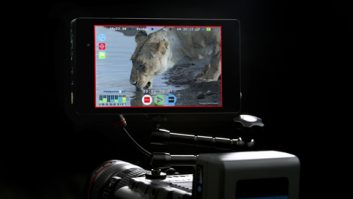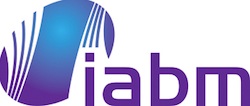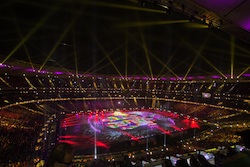
World Cup retrospective: With many technical landmarks achieved in South Africa this summer including extensive 3D coverage and having the same equipment available in stadia and the IBC, Kevin Hilton takes a look back at the technology and workflow highlights from World Cup 2010.
The World Cup is usually remembered for a handful of standout moments and stick in the memory, but there are also episodes the give character and stability. The 2010 FIFA World Cup certainly had the former — the French rebellion, the new Hand of God, Maradona’s ‘eccentricities’, England’s lamentable display and Spain winning the tournament for the first time — but backing this were the performances of the African teams, the passion of the South African fans, Paul the psychic octopus and the constant drone of the vuvezela.
These two sides are mirrored in the broadcast coverage of the event. This year’s Finals in South Africa were the second outing for high definition at the competition, after its debut in Germany in 2006, and the amount of HD coverage was extended beyond the matches. Threatening to overshadow this effort was the 3D transmission of 25 matches as a common undertaking by host broadcaster HBS, Sony and FIFA.
Holding all this together was a range of supporting players, including distribution centres built by Gearhouse Broadcast, multilateral trucks, SNG crews and racks of routing and processing equipment to ensure that the signals from the HD cameras, EVS servers, and 5.1 consoles got to where they were meant to go.
This World Cup marked a first in having the same equipment available at all the stadia and the International Broadcast Centre (IBC), with lead equipment supplier Grass Valley providing approximately 290 HD cameras, predominantly LDK-6000/8000 WorldCams, and 43 production switchers, amongst other vision gear. Also part of the package were microphones from Schoeps and Sennheiser, Lawo digital mixing consoles, Genelec monitoring, Dolby encoders and ancillary equipment. HBS’ senior engineering manager, Christian Gobbel, said the aim was to give “as standardised a product as possible”.
The exception was the 3D production, with equipment supplied by Sony, 3D rig specialist Element Technica and Canon. The chief executive of HBS, Francis Tellier, said in the run up the Finals that while the majority of the billions of viewers watching the World Cup would do so in 2D, there was a need to continue the innovation programme that led to the event being broadcast in HD and 5.1.
“The exposure to 3D is limited compared to 2D,” he said, “but providing the capability is part of a motivation to make broadcast history.” Selected games were covered using eight Element Technica Quasar 3D rigs. A major part of the presentation was stereoscopic zoom capability, which Tellier commented are essential for football. “From our tests it was clear that 3D works very well in some sports, such as basketball and hockey, but is more difficult for others, like football and rugby,” he explained. “Football without zooms is a bit of a disappointing experience but we have them now so it will be what viewers expect.”
To advise on the 3D production HBS brought in Duncan Humphreys, a director of UK production company and stereoscopy specialist CAN Communicate, which has built up experience in recent years on a range of events, including sport. In his role as consultant Humpreys was involved in the initial testing of systems, integrating 3D rigs, cameras, lenses and Sony’s new multi image processor, the 3D Box. “We worked closely with Sony, Element Technica and Canon to ensure complete continuity of 3D control and that images conformed to the highest standards throughout the broadcast chain, from capture to final delivery,” he says.
Individual needs
The use of 2D HD was extended to cover non-match footage, including interviews and magazine packages. Francis Tellier was particularly keen to point out that the server at the IBC worked entirely in HD, as opposed to the all SD operation in 2006. Feature material for broadcasters was provided by 40 ENG teams working across South Africa, 32 of them travelling with the teams. “We’re making as much content available to the broadcasters as possible to compensate for the logistical difficulties of getting around the venues in the country,” explained Tellier.
Broadcast signals from each of the ten stadia in South Africa used for this World Cup were distributed through Technical Operations Centres (TOCs) back to the IBC in Johannesburg. The TOCs were built into Portacabins by systems integrator Gearhouse Broadcast and housed routing, switching and monitoring equipment. UK manufacturer and distributor Canford supplied a great proportion of this, with approximately 6,470 items. These included 685 custom-built panels, plus BNC HD termination panels, Musa HD panels and standard XLR panels.
Gearhouse Broadcast was brought in as facilities manager by Grass Valley and in this capacity supplied the venue TOCs. The company also worked for several broadcasters covering the World Cup, providing studios and technical back-up to tailor the host coverage to suit individual needs. ESPN America, Univision, ITV, ESPN Brazil, TYC Sports and Te Le Fe Argentina contracted Gearhouse to work for them variously at the grounds and the IBC.
Kevin Moorhouse, Gearhouse Broadcast’s chief operating officer, says this called for 160,000kg of equipment, which was shipped to South Africa from the UK in nine sea containers. The company sent over engineers to look after the facilities, although, Moorhouse explains, clients, including HBS, brought in their own operations staff to run them.
Equipment for multilateral broadcasters was provided by a number of facilities companies, including Alfacam, CTV OBs and Studio Hamburg. Moorhouse comments that between eight and 16 signals were received in the TOCs from the trucks or flyaways on site and then fed back to the multilaterals for the addition of graphics. Feeds were then returned to the TOC for patching to the IBC in Johannesburg over the telco infrastructure.
Audio was distributed as Dolby E streams embedded in the video. American broadcasters, notably ESPN, took the 5.1 and stereo signals and re-encoded them for transmission in the DTS Neural format.
The TOCs were based on 3G infrastructures and operated in HD, although there was still a need for SD. Moorhouse explains that the Argentinean broadcasters required output in SD, so their feeds were down-converted.
3D production was a stand-alone production for this World Cup but Kevin Moorhouse comments that there will certainly be a need for stereoscopic monitoring in the TOCs at the 2014 Finals. Just a reminder that players and managers are not the only people already looking ahead to the next showcase for international football in Brazil.
